1 Rode Hill (Miller’s House) is listed as late 18th century although some believe it was built circa 1704 when Henry Whitaker, (a clothier and dyer), established a dye house and workshops at the eastern end of Rode Bridge. (See below – the Miller’s House property is 106a on the map). Parts of the house itself were probably used as work rooms, as there are signs of machinery having been bolted to some of the stone flagged floors. There were further buildings to the rear and side of the house of which little trace is left, although the remains of a round stove house or air house can still be seen; tenter hooks (for stretching the wool) are still fixed to the beams. There is also some evidence to suggest that an earlier house stood on the site. Insurance papers of 1757 show that these premises consisted of two dye houses, a stove, two stove houses and an air house, workshops and a shear shop. Henry Whitaker died in 1730 and the property passed to his son, William, who let the dye-house to his brother, Thomas. Thomas Whitaker continued the business very successfully and when he died in 1782, he passed it to his son-in-law Samuel Ledyard.
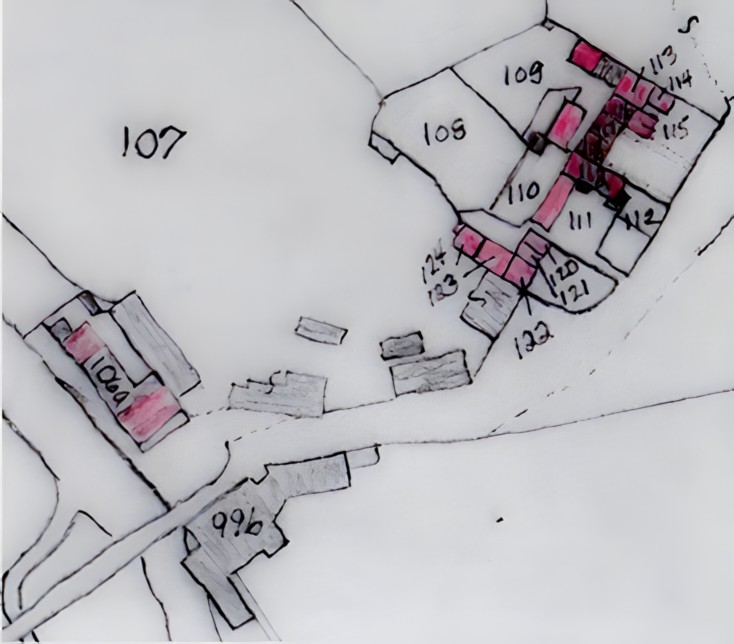
By 1807, the house was owned by Elizabeth Whitaker and occupied by Thomas Whitaker Ledyard (1763-1835), Samuel’s son and the builder of Langham House. After Thomas W. Ledyard’s death in 1835, the property passed into the owner-ship of the Pooll family, and gradually over the years most of the mill buildings fell into ruin, as the woollen trade went into decline. Parts of the surviving buildings were eventually used as a laundry for Rode Manor. The map of 1903 shows that by that time the building was much reduced in size—probably close to size and shape we see today. The complex of buildings to the east of the Miller’s House, have evolved over many years. It is thought that the coach house at the eastern end is the oldest part (age unknown); the stables are believed to have been built in the 1720s as a single storey. The separate coach house with a gazebo above was built around 1760 and it is thought that the third or middle coach house was built at the same time—together with the addition of a second storey linking the three buildings together. There was a counting house here, presumably either the gazebo or the upper floor of the stable block.
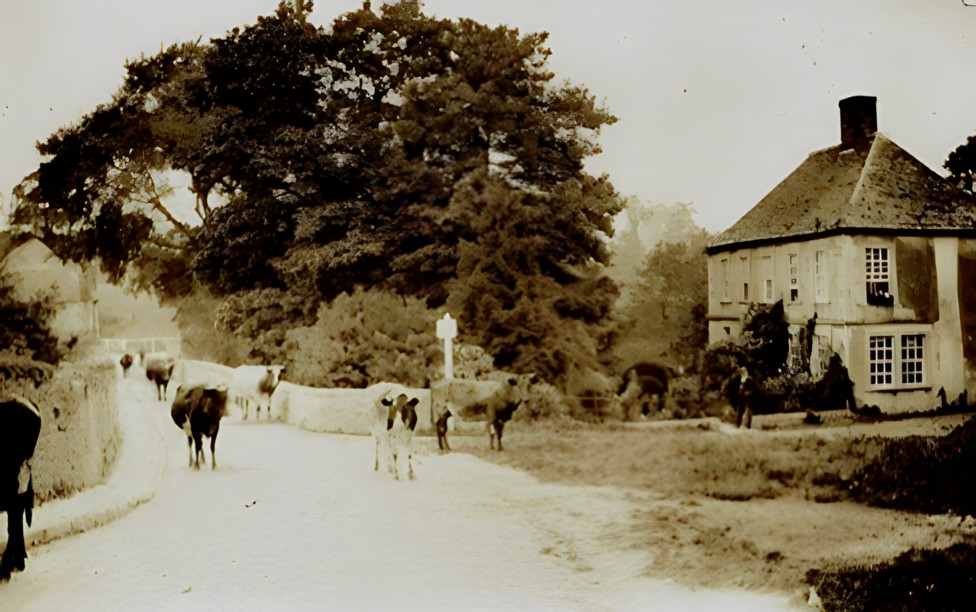
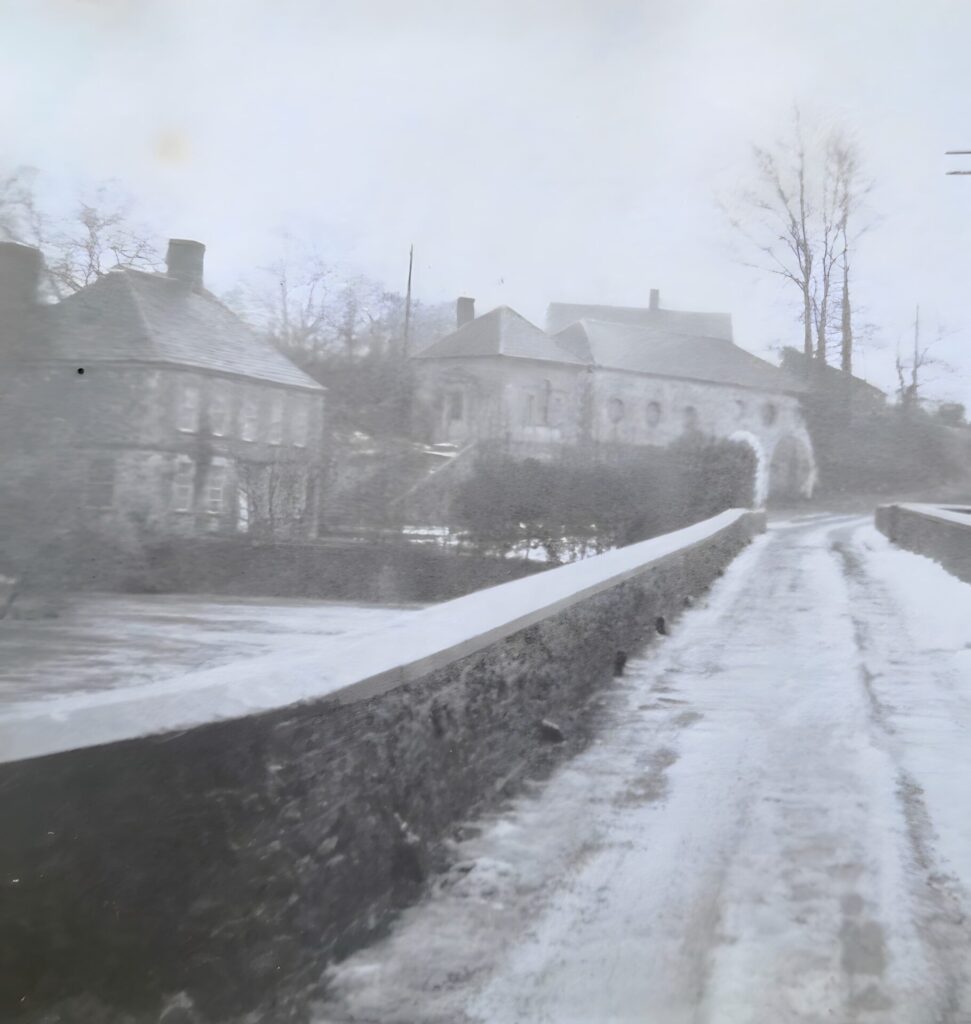
3, 5, 7 and 9 Rode Hill are a part of the original cluster of cottages built to house workers for the mills on Rode Bridge, as well as workrooms. The 1843 map shows a cluster of many small cottages and most of them were owned by Edward West, a tailor. It is thought that Edward’s wife, Ann, may have made an amazing coverlet now (2020) in the V. & A. museum. The coverlet, which is signed and dated Ann West, 1820, sold at auction for £24,000 in 2006. By 1903, many of these cottages were combined into the same grouping as is here today.
3 Rode Hill was originally a weaver’s workshop, with no dwellinghouse. It was just one long room with all the windows facing the north-east. On the 1843 map, the property was owned by Thomas and Henry B. Pooll who owned the mill on the eastern end of Rode Bridge. It was a much larger structure then. (Numbers 122, 123 and 124 in figure 27). Michael Sparey’s gran told him a story about when the property was first turned into a cottage. It was split into two, part of it for the living area and the other part for a washroom. The family living here had broken into Trowbridge barracks and stolen the Army’s horses. The neighbours started complaining about loud noises coming from the washroom and upon inspection, the authorities found three or four army horses there.
9 Rode Hill (Roseland House) had a facade added to the front and it was made from two cottages. As early as 1915, Miss Reed was living in 5 Rode Hill (Rusholme) and she was still here in 1935; Mrs. Alan Woolterton Reed lived next door in 7 Rode Hill (Inglenook) at least by 1923.
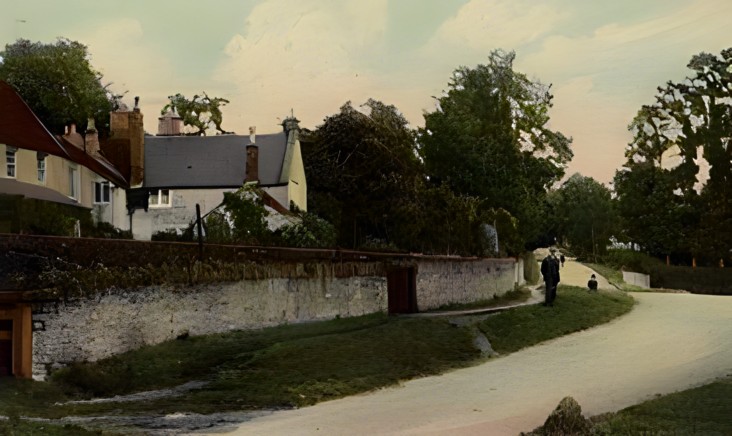
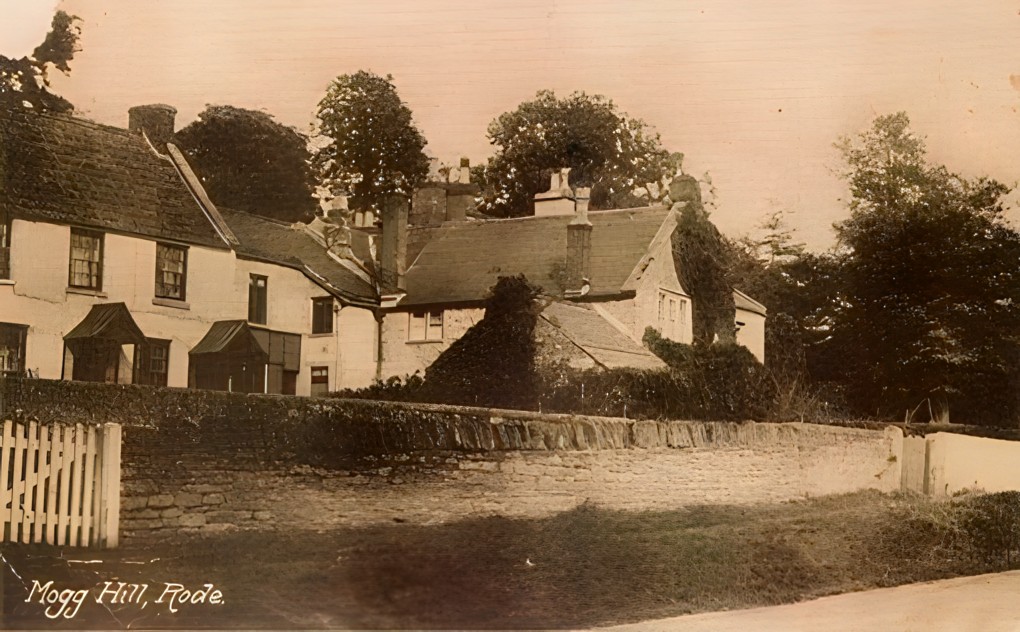
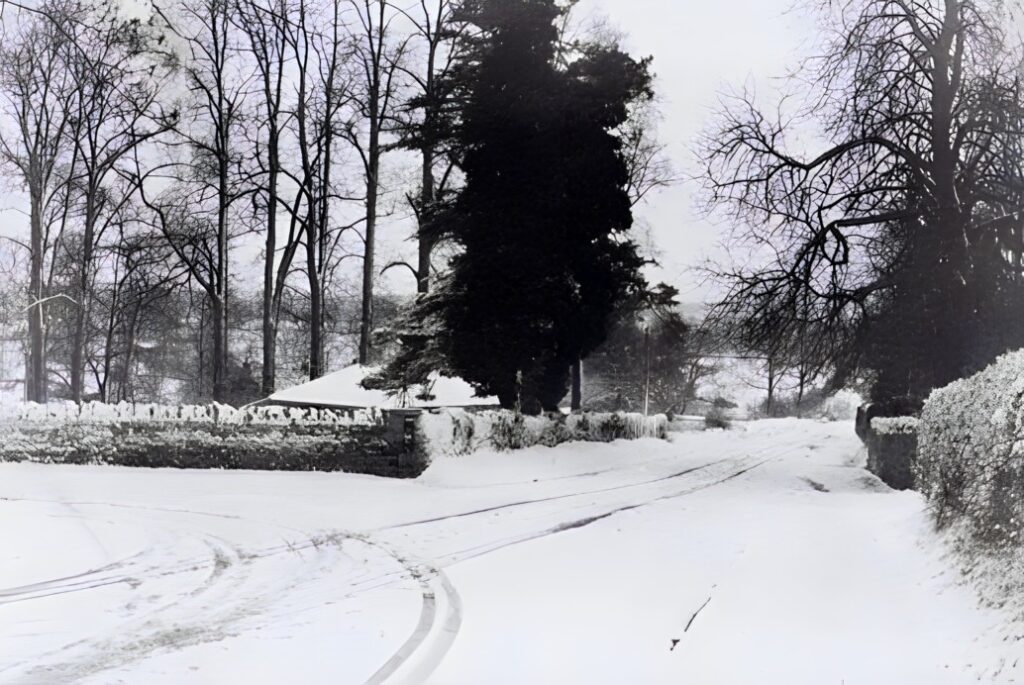
Langham House. Michael Sparey believes there was a house built on the site before the present house was built. He said he found foundations behind the house when he was working in the garden. However, the present house, originally known as Rode Hill House, was probably built by T. Baldwin for T. W. Ledyard, a Rode clothier, in 1792. Later additions were made in 1810. It is a substantial stone house of three stories and five bays. The windows on the ground floor have semi-circular heads and the central door has a porch supported by pairs of columns. Most of the ground floor rooms retain the plaster friezes and cornices, the finest is in the dining room. In 1843, Mary King occupied the Rode Hill property, although it was still owned by the T. W. Ledyard estate.
The Tithe information about the property at that time described it as “House, offices, courts, and pleasure gardens.” In 1854, Samuel Kent, a factory inspector and his family rented Rode Hill house. Six years later his infant son was cruelly murdered and his elder daughter, Constance, eventually admitted to the crime – see https://www.rodevillage.com/history-of-rode/social-history/crime-and-punishment/ for the story of the crime.
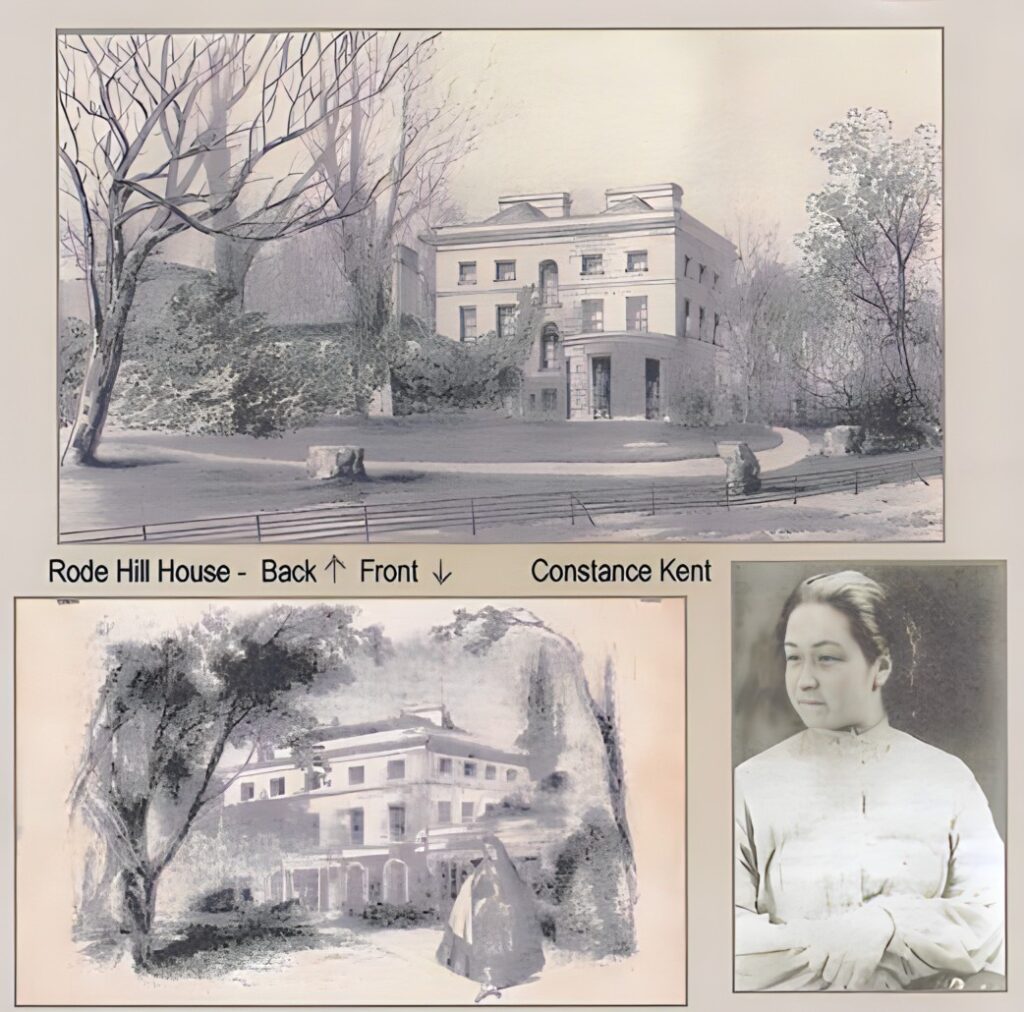
On the 21st of August 1861, there was a “Sale of the Langham Estate, late the property of T. W. Ledyard, deceased, at the George Hotel, Frome.” It was sold to Mr. Alfred Haynes, a woolstapler of Frome. In 1863 Langham House (as it was then called) was offered for sale in Bath but it did not sell until the end of the year when Mr. Abraham Laverton of Westbury purchased it from Mr. Haynes. According to the publicity for the auction, the property then included:
“Mansion house called Langham House together with coach-house, stable, garden, greenhouse, cottage, orchard, plantation, Pleasure Grounds and above 7 acres of superior pasture land.”
By Christmas of 1878, Mrs. Tuberville was living at Langham House and she left in 1880. From at least 1898 to 1915, Mrs. Pattinson lived here. By 1920, Howard Kennard had made Langham House his home. By 1931 he was Sir Howard Kennard and he became the UK Ambassador to Poland in 1937. He continued to live at Langham House until he sold it in 1946. In November of that year, Mr. and Mrs. Walkinshaw moved into the house. Michael Sparey told me (DP) that in 1956, the Tetley family moved in. At one time, there was an earthwork extending from the site of Rode Hill House to Mogg Hill (where Lower Street meets Rode Hill). When the house was built, the main sewer was laid in this earthwork, which was levelled and filled up with the earth that came from the cellars and foundations.
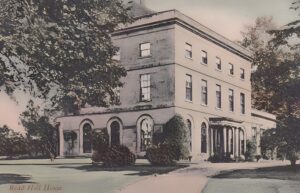
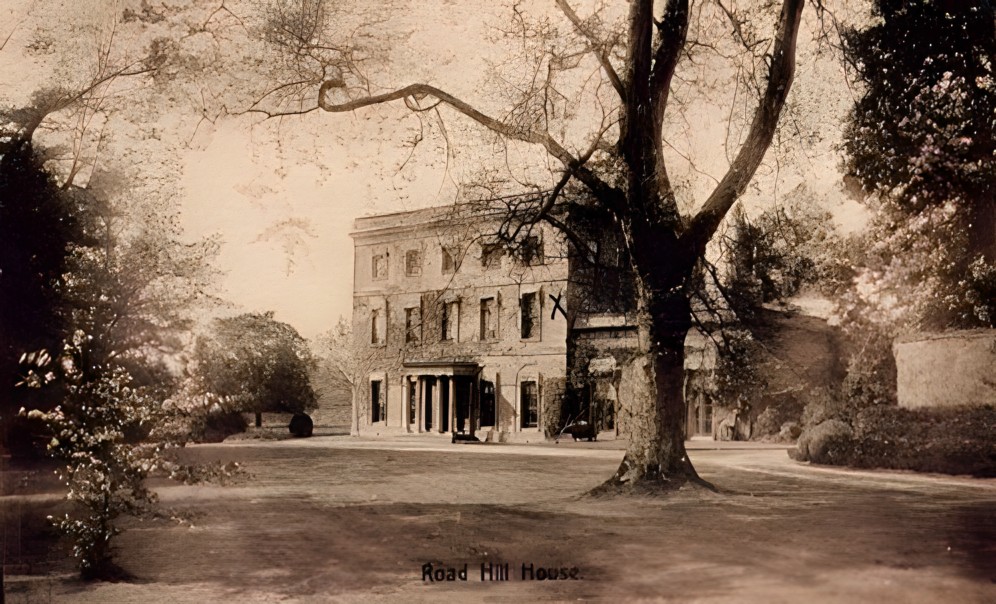
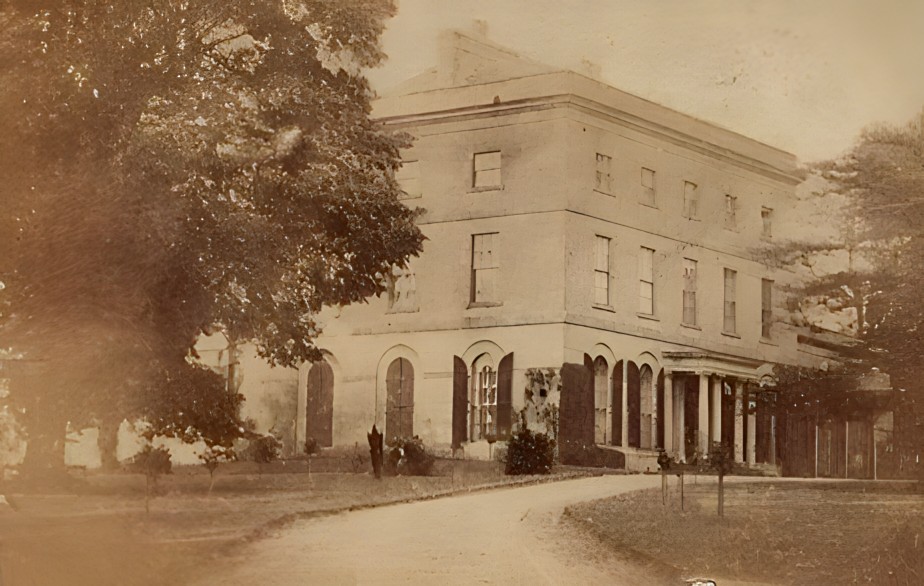
ROAD HILL – A POEM BY JAMES BODMAN OF TROWBRIDGE.
PRINTED BY PHILIP ROSE 20, BROADMEAD, BRISTOL, 1814
ONE day in travelling to the west,
I stopped on Road Hill, to rest:
My friendly muse came tripping by,
With smiling looks, tho seeming shy.
I said, “dame muse, what do you here;”
She said, “I come to give you cheer,”
By representing to your view,
Landscapes of nature, old and new.
Here hills and vales, and pleasant woods,
Luxuriant sights! the eyes’ chief good;
A feast on nature, which you prize;
Twill satiate your longing eyes.
See towards the south, on Bratton hill,
Where Alfred fought with sword and bill,
And slew the bloody Danish crew,
Who sought the Britons to subdue.
Surrounding views stand in exquisite dress,
To feed your pensive mind, from east to west;
Where nature joyn’d to art, strongly combine,
To shew the great creator all divine!
Beneath yon hill, we view amongst the trees,
That pile which long has born assaults from zephyr breeze,
Whose spire stood high, to excite your admiration,
Ninety-three feet above its own foundation.
But, sov’reign pow’r! twice with a dread command
Destroy’d this spire, with lightnings as his hand!
And several times this noble church and tow’r
Has felt the strokes of his resistless pow’r.
Next comes in sight, old Coulstans shady brow,
With shaggy woods and trees without a row;
Quite hanging o’er the trav’ller underneath
Is fill’d with awe; at ev’ry violent breeze.
Yet to the eye, and at a distant view,
They shew a beauty and a grandeur too;
Tho’ whist’ling wind, runs thro’ the sounding wood,
And terrifies the ear, yet it affords much good.
Dress’d in her sable, now my muse laments
Some shade which intervenes, and so prevents
Her viewing of that mansion, built at Stoke,
Whose beaut’ous grandeur conquers with a stroke!
But now I move to a north eastern mark,
And view the woods and groves of old Spy park:
The once domain of Baynton’s antient race;
But by demise, we in the rolts can trace.
More to the north stands beaut’ous Bowden hill,
Whose distant prospects the beholder fill;
This verdant park, where waters rise and roll,
In which a mansion stands to crown the whole.
Now we descend to things more near in sight,
And view the town and spire, which strike us with delight;
And where my lungs first drew her vital breath,
Yea, where its likely I may yield to death.
The spot where various times and changes wait,
To shew how mutable our human state:
Yet blessings there abound to great and small,
And teach the lesson – God is all in all!
My muse attend me now from east to west,
To view the scenes, which may our thoughts arrest;
This small delightful spot, where nature smiles;
And quite enslave the thoughts, and many a one beguile.
Just at my feet what beaut’ous sights appear,
Ledyard’s fair mansion, bids us both draw near;
Here we behold its shrubb’ries and its lawn,
Where bount’ous nature, seems to have a throne.
And just beneath, there opens to its view,
A water-fall, both grand and pleasing too:
Here beaut’ous nature cloth’d her smiling banks,
And trees preserving order, by their ranks.
But my impatient eyes now leave this scene,
And mount yon hill, that’s cloth’d in smiling green;
And amongst its trees, there’s built a pleasing cot,
My eyes now feast around this pleasant spot,
And hail its owner in his happy lot.
I turn myself, and to renew my sight,
And by new objects to obtain delight:
Here I behold, built on a little hill,
A plain neat villa, shews the builder’s skill;
Its situation is south west of Road,
And is the residence of Mr. Noad.
But various charms now crow’d upon our sight,
And each concur to give some new delight;
Yet we must leave these objects now in view,
Yea, to these charming scenes we bid adieu.
Homeward I now pass on, leave Road hill,
My muse now takes her flight at her own will:
I hail’d and thank’d her for her visit paid,
Her courteous company did to my pleasure add,
While I from pleasing views this poem made.